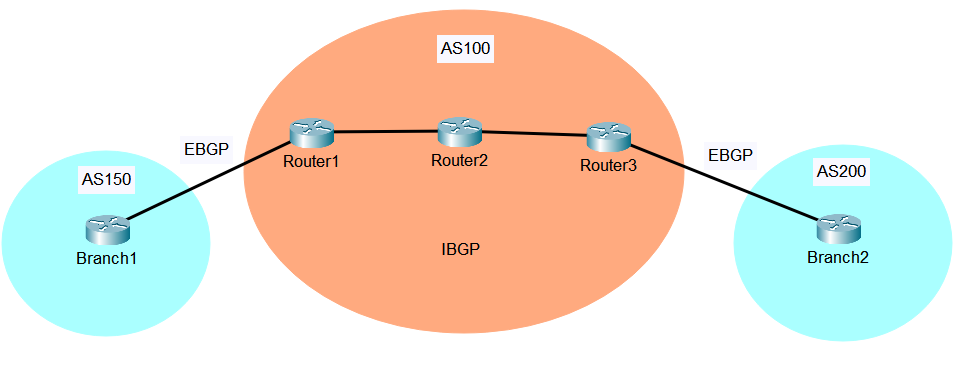What is a Ebgp?
Summary
1. What is the difference between BGP and EBGP:
External Border Gateway Protocol or eBGP is a flavor of Border Gateway Protocol (BGP) used for communication between different autonomous systems (AS). eBGP functions as the protocol responsible for interconnection of networks from different organizations or the Internet.
2. What is the difference between EBGP and OSPF:
While BGP excels with dynamic routing for large networks, OSPF offers more efficient path choice and convergence speed. Border Gateway Protocol, or BGP, and Open Shortest Path First, or OSPF, are two of the most popular, standards-based dynamic routing protocols used around the world.
3. How does EBGP work:
Border Gateway Protocol (BGP) refers to a gateway protocol that enables the internet to exchange routing information between autonomous systems (AS). As networks interact with each other, they need a way to communicate. This is accomplished through peering. BGP makes peering possible.
4. What is EBGP peer:
EBGP peerings are the core component of the BGP protocol on the Internet. EBGP is the exchange of network prefixes between autonomous systems. The following behaviors are different on EBGP sessions when compared to IBGP sessions: Time to Live (TTL) on BGP packets is set to one.
5. Why do we use eBGP:
EBGP Multihop can be used to connect networks across multiple autonomous systems and is an important tool for network administrators who need to connect different networks over long distances.
6. What are the 3 types of routing performed by BGP:
– Routing Information Protocol (RIP)
– Interior Gateway Protocol (IGRP)
– Open Shortest Path First (OSPF)
7. What are the four types of OSPF routers:
– Routers for internal use: Internal routers
– Area Borders Routers
– Autonomous Systems Boundary Routers
– Backbone Routers
8. Do eBGP neighbors need to be directly connected:
Neighbors do not have to be directly connected to each other. Because IBGP peers are not required to be directly connected, IBGP uses the IGP path (the IP next-hop learned from the IGP) to reach an IBGP peer for its peering connection.
9. When using eBGP, how is the best possible route determined:
Prefer the path with the lowest neighbor IP address. If you have two eBGP routers and two links in between then the router ID will be the same. In this case, the neighbor IP address is the tiebreaker.
10. What is BGP routing in a nutshell:
BGP is designed to exchange routing and reachability information between autonomous systems on the Internet. Each BGP speaker, which is called a ‘peer’, exchanges routing information with its neighboring peers in the form of network prefix announcements.
11. Do all routers use BGP:
The answer is yes. BGP is the routing protocol of the Internet. BGP is how all Internet routers route your email and web requests across the Internet. Without BGP, no traffic would flow across the Internet, and the Internet would be useless.

What is the difference between BGP and EBGP
External Border Gateway Protocol or eBGP
It is a flavour of Border Gateway Protocol (BGP) used for communication between different autonomous systems (AS). eBGP functions as the protocol responsible for interconnection of networks from different organizations or the Internet.
Cached
What is the difference between Ebgp and OSPF
While BGP excels with dynamic routing for large networks, OSPF offers more efficient path choice and convergence speed. Border Gateway Protocol, or BGP, and Open Shortest Path First, or OSPF, are two of the most popular, standards-based dynamic routing protocols used around the world.
How does EBGP work
Border Gateway Protocol (BGP) refers to a gateway protocol that enables the internet to exchange routing information between autonomous systems (AS). As networks interact with each other, they need a way to communicate. This is accomplished through peering. BGP makes peering possible.
Cached
What is EBGP peer
EBGP peerings are the core component of the BGP protocol on the Internet. EBGP is the exchange of network prefixes between autonomous systems. The following behaviors are different on EBGP sessions when compared to IBGP sessions: Time to Live (TTL) on BGP packets is set to one.
Cached
Why do we use eBGP
EBGP Multihop can be used to connect networks across multiple autonomous systems and is an important tool for network administrators who need to connect different networks over long distances.
What are the 3 types of routing performed by BGP
Routing Information Protocol (RIP) Interior Gateway Protocol (IGRP) Open Shortest Path First (OSPF)
What are the four 4 types of OSPF routers
Four Types of OSPF RoutersRouters for internal use: Internal routers. Internal routers are routers that belong to the same OSPF region as their directly connected networks.Area Borders Routers.Autonomous Systems Boundary Routers.Backbone Routers.
Do eBGP neighbors need to be directly connected
Neighbors do not have to be directly connected to each other. Because IBGP peers are not required to be directly connected, IBGP uses the IGP path (the IP next-hop learned from the IGP) to reach an IBGP peer for its peering connection.
When using eBGP how is the best possible route determined
Prefer the path with the lowest neighbor IP address. If you have two eBGP routers and two links in between then the router ID will be the same. In this case, the neighbor IP address is the tiebreaker.
What is BGP routing in a nutshell
BGP is designed to exchange routing and reachability information between autonomous systems on the Internet. Each BGP speaker, which is called a “peer”, exchanges routing information with its neighboring peers in the form of network prefix announcements.
Do all routers use BGP
The answer is yes. BGP is the routing protocol of the Internet. BGP is how all Internet routers route your email and web requests across the Internet. Without BGP, no traffic would flow across the Internet and the Internet would be useless.
What are the 3 types of routing protocols
7 types of routing protocolsRouting information protocol (RIP)Interior gateway protocol (IGRP)Enhanced interior gateway routing protocol (EIGRP)Open shortest path first (OSPF)Exterior Gateway Protocol (EGP)Border gateway protocol (BGP)Immediate system-to-immediate system (IS-IS)
What are the six OSPF route types
This is the preferred path list that OSPF uses:Intra-Area (O)Inter-Area (O IA)External Type 1 (E1)NSSA Type 1 (N1)External Type 2 (E2)NSSA Type 2 (N2)
Why do we use EBGP
EBGP Multihop can be used to connect networks across multiple autonomous systems and is an important tool for network administrators who need to connect different networks over long distances.
What is EBGP in networking
External BGP (EBGP) is a routing protocol used to exchange information between autonomous systems, or networks, on the internet. EBGP is used to share information about how to reach destinations outside of an organization's network.
Do EBGP neighbors need to be directly connected
Neighbors do not have to be directly connected to each other. Because IBGP peers are not required to be directly connected, IBGP uses the IGP path (the IP next-hop learned from the IGP) to reach an IBGP peer for its peering connection.
Why would you need BGP
Need of BGP
We need it for exchanging routing and reachability information among autonomous systems on the Internet. It gives control over ours and our neighbour's route selection. Hence it is the routing protocol for the Internet. Also, BGP is the most popular exterior gateway protocol.
Why is BGP needed
BGP allows different autonomous systems on the Internet to share routing information. The gateways of autonomous systems are called Autonomous System Boundary Routers (ASBR).
What are the 2 types of routing protocols
The Internet is based on the AS concept; therefore, two types of routing protocols are required:Interior Gateway Protocols (IGP): Used for routing within an AS. It is also referred to as intra-AS routing.Exterior Gateway Protocols (EGP): Used for routing between autonomous systems.
What are the 2 types of routing
Types of RoutingStatic Routing.Default Routing.Dynamic Routing.
Why do we need eBGP
BGP helps provide redundancy by enabling routers to quickly adapt and send packets through another connection if one internet path goes down. It is often used in large networks, such as internet service provider networks, wide area networks and infrastructure-as-a-service environments.
Is BGP a router
Border Gateway Protocol (BGP) is the routing method that enables the Internet to function. Without it, it would not be possible to search on Google or send an email. BGP is a routing protocol.
What is the BGP in a nutshell
Border Gateway Protocol (BGP) is an exterior gateway protocol that enables the exchange of routing and reachability information between autonomous systems (AS) on the internet. BGP, as defined in RFC 1163 and RFC 1267, plays an important role in forming the topology of the global internet.
What are two benefits of BGP
BGP allows you to define and enforce granular rules for traffic engineering, load balancing, security, and quality of service, based on various attributes of the routes, such as origin, preference, community, or AS path.
Which three 3 are types of routes found in a routing table
There are three types of routing:Static Routing.Default Routing.Dynamic Routing.



0 Comments